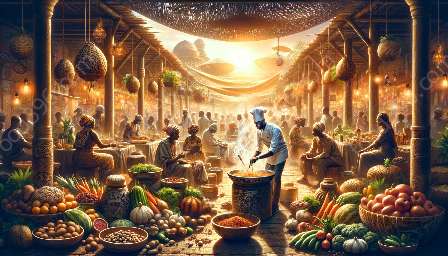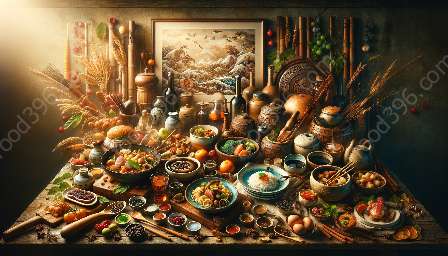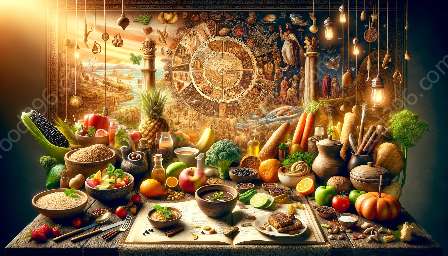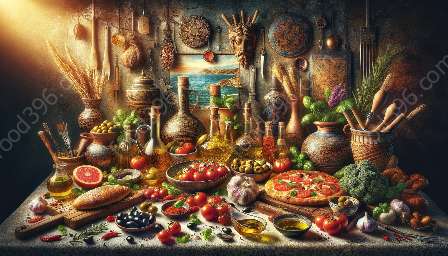Middle Eastern cuisine is a tapestry of exotic flavors, traditional culinary practices, and vibrant history. This culinary tradition is deeply rooted in the region's ancient cultures and has evolved over thousands of years, influenced by the diverse landscapes, climate, and customs of the Middle East. From delectable kebabs to aromatic rice dishes and delicate pastries, Middle Eastern cuisine offers a diverse array of culinary delights.
The Ancient Origins of Middle Eastern Cuisine
The history of Middle Eastern cuisine dates back to ancient times, with early civilizations such as the Sumerians, Babylonians, and Assyrians cultivating grains, legumes, and fruits in the fertile crescent. The use of ingredients like wheat, barley, lentils, and dates was central to the ancient Mesopotamian diet, and these staples continue to play a significant role in modern Middle Eastern cuisine.
Ancient civilizations in the Middle East were known for their advanced agricultural techniques and ingenious methods of food preservation, such as drying, pickling, and fermentation. These methods enabled them to store and utilize food effectively, contributing to the development of diverse culinary practices and flavor profiles.
The Impact of Islamic Civilization
The spread of Islamic civilization across the Middle East during the medieval period had a profound influence on the region's culinary heritage. Islamic culinary traditions, including the use of aromatic spices, intricate cooking methods, and culinary etiquette, permeated the culinary landscape of the Middle East, leaving an indelible mark on its cuisine.
During the Islamic Golden Age, the exchange of culinary knowledge and ingredients flourished through trade routes and interactions with diverse cultures. This resulted in the fusion of flavors, cooking styles, and ingredients from Persia, India, North Africa, and the Mediterranean, leading to the development of a rich and diverse culinary tapestry that characterizes Middle Eastern cuisine.
Key Ingredients and Culinary Techniques
One of the defining features of Middle Eastern cuisine is the abundant use of vibrant spices and herbs, such as cumin, coriander, sumac, saffron, mint, and cinnamon, which add depth and complexity to dishes. Grains, particularly rice and bulgur, serve as the foundation of many Middle Eastern recipes, while legumes, including chickpeas, lentils, and fava beans, are widely used in savory stews, soups, and dips.
The art of grilling, broiling, and slow-cooking over open flames is integral to Middle Eastern culinary traditions, giving rise to iconic dishes like kebabs, shawarma, and slow-cooked tagines. The use of clay pot cooking and tandoor ovens is also prevalent, lending a distinct smoky flavor and tender texture to various preparations.
Rise of Regional Variations
As Middle Eastern cuisine evolved over time, distinct regional variations and culinary traditions emerged, shaped by local agricultural practices, cultural influences, and historical legacies. From the savory lamb and rice dishes of Persia to the aromatic tagines of North Africa and the fragrant spice blends of the Arabian Peninsula, each region boasts a unique culinary identity.
Moreover, the Ottoman Empire's culinary legacy has left an indelible mark on the cuisine of modern-day Turkey, where an exquisite fusion of Central Asian, Middle Eastern, and Mediterranean flavors defines its culinary landscape. The intricate blend of sweet and savory flavors, along with the use of nuts, fruits, and richly spiced meats, exemplifies the richness and complexity of Ottoman-inspired cuisine.
Culinary Traditions and Festive Celebrations
Middle Eastern cuisine is deeply intertwined with festive celebrations, religious observances, and communal gatherings, where food serves as a centerpiece for social cohesion and cultural expression. The practice of preparing and sharing elaborate feasts during religious holidays, weddings, and special occasions reflects the hospitality and generosity ingrained in Middle Eastern culinary traditions.
From the exuberant flavors of Lebanese meze to the elaborate feasts of Persian New Year, Middle Eastern culinary traditions are a testament to the region's rich cultural diversity and vibrant culinary heritage.




















